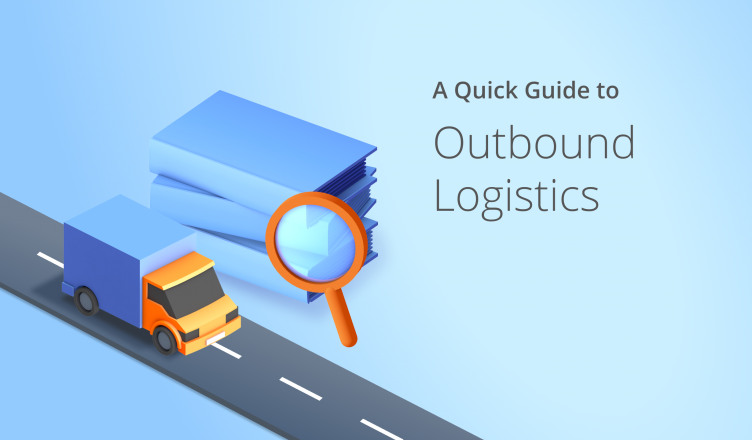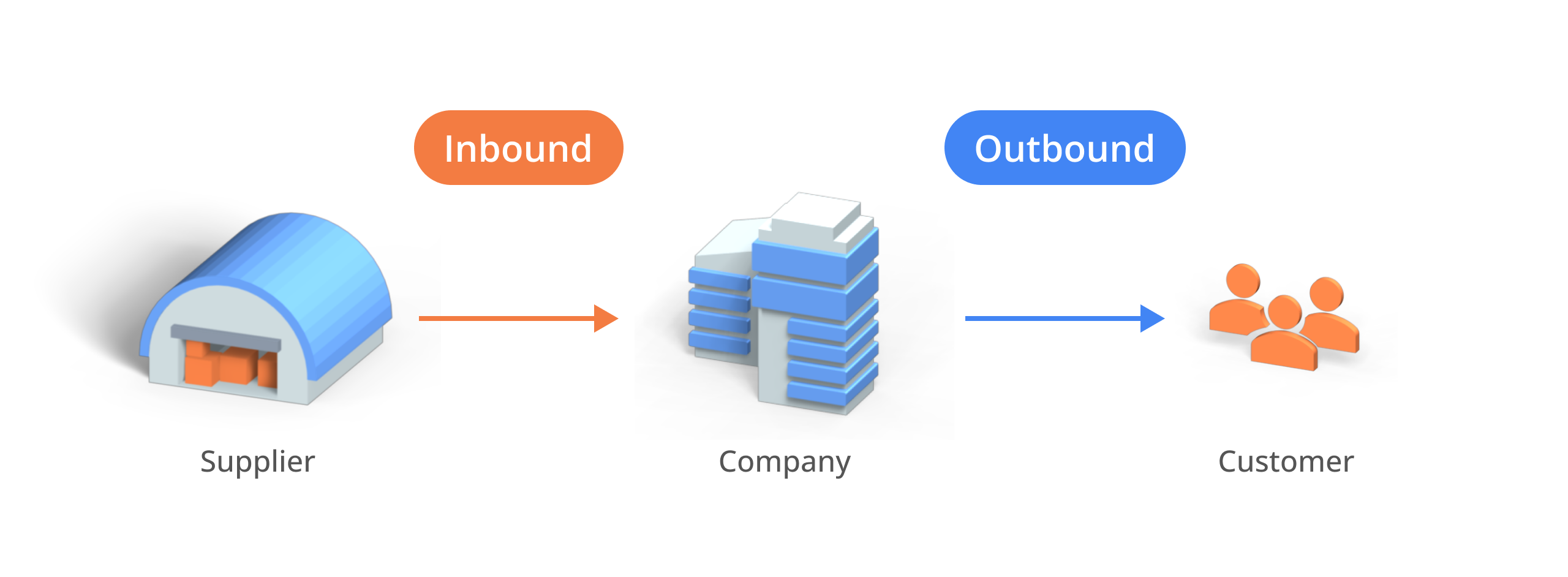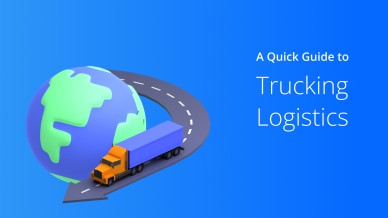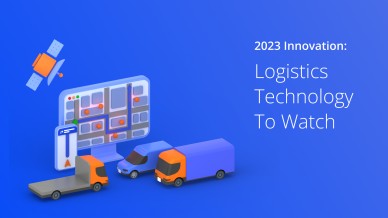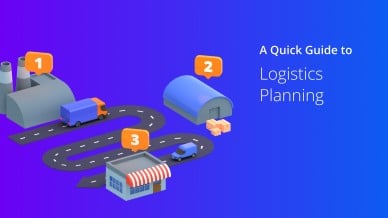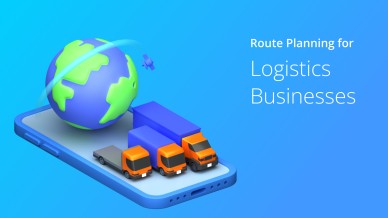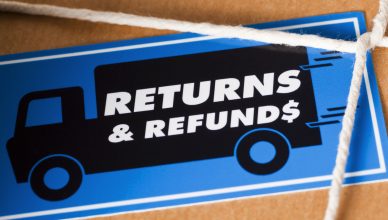Table of Contents
Strong and well-optimized outbound logistics is critical to maintaining a well-oiled supply chain.
That’s because poor outbound logistics activities can affect your production, customer service, revenue, and profits.
For example, delayed deliveries, shipment errors, poor customer experience, and insufficient inventory supplies can happen when your outbound logistics process is not set right.
These aren’t just “the cost of doing business.” All of this can damage your business’s reputation, especially when you can avoid these from happening in the first place.
You can do just that by implementing the best outbound logistics system in your organization. But before getting to that, let’s first learn the basics.
What Is Outbound Logistics?
Outbound logistics is the process of storing, moving, and distributing goods to customers. It focuses on the demand side of the supply-demand equation.
The process involves order fulfillment, packing, delivery, and customer service related to delivery.
How Does Inbound Logistics Differ from Outbound Logistics?
The primary difference between inbound and outbound logistics is to whom the goods are delivered.
Inbound logistics involves receiving goods from manufacturers and suppliers. It includes raw materials procurement, sourcing, purchasing, storage, and supplier returns.
Outbound logistics involves delivering products to the end customers. It includes inventory and order management, packing, and transportation.
Here’s a comparison table to help you understand the differences more clearly.
| Inbound Logistics | OutBound Logistics | |
|---|---|---|
| Definition | Inbound Logistics is about receiving goods or raw materials from a manufacturing plant or supplier to a warehouse | OutBound Logistics is about delivering the goods to the end customers |
| Focus | Supply | Demand |
| Key Relationships | Suppliers, vendors, and their distributors | Distributors, wholesalers, retailers, end customers |
| Processes | Materials sourcing, procurement, materials handling, putaway | Inventory Management, order fulfillment, shipping |
| Strategic Imperative | Obtaining materials or goods required to make products | Meeting customer demand, supporting the sales process to generate revenue |
The Outbound Logistics Process
Here’s a quick guide to help you learn how the outbound logistics process works.
Order Entry, Validation, and Modifications
As soon as customers place their orders, outbound logistics starts with validating the orders, checking for duplications or errors, and managing exceptions quickly.
Product Picking and Packing, Staging, Checking, and Loading
Next, warehouse workers pick the products from the respective inventory location and update the inventory count to ensure accurate stock levels.
They then pack, label, and sort the products by carrier and service, route, and manifest outbound orders per specific customer’s requirements.
Often the warehouse team records the staging, checking, and loading process in real-time through a warehouse management system for timeliness and accuracy.
Trucks Pick up the Order and Drive It to Distribution Centers
Freight trucks then pick up the orders and drop them off at the closest distribution centers to the customers.
Delivery
The last step of the outbound logistics process is delivering the product to its destination and creating a process log for records.
Delivery drivers pick up the orders at the distribution centers for their delivery area and deliver them to the customers’ doorstep, completing the logistics process.
Want To See For Yourself How Route4Me Can Boost Your Profits?

Distribution Channels of Outbound Logistics
A distribution channel is about how your product reaches the customers.
Distribution channels can primarily be categorized into direct and indirect distribution.
Direct distribution is when you sell directly to your customers, while indirect distribution is when you sell through intermediaries (such as retailers or wholesalers).
There are many distribution methods such as:
- Direct to consumer distribution
- Dealer networks
- Omnichannel
- Value-added resellers
- Dropshipping
- Dual distribution
Logistics complexity, speed, costs, customer satisfaction, quality, and control are some of the critical parameters you should consider when selecting a distribution channel.
How Route4Me Improves the Outbound Logistics Process
Outbound logistics and delivery optimization are critical to ensuring happy customers and improving customer lifetime value (CLTV), saving costs, and creating a tangible impact on your company’s bottom line.
Below are several ways in which Route4Me’s trucking GPS app can improve the outbound logistics of your logistics delivery company.
Make Faster and On-time Deliveries
Route4Me route planner helps you plan the fastest and most well-optimized routes with driving directions for delivery drivers.
The route optimization software considers all the necessary factors, including load, weight, height, weather, traffic, avoidance zones, and roadblocks. This speeds up last-mile delivery and ensures your drivers show up on time.
The best part is that it takes just 30 seconds for route planning and scheduling.
For example, switching to Route4Me helped True Heart Rose Company cut route planning time in half and helped make deliveries with zero hassles.
Learn how to plan a route with multiple stops in 30 seconds.
Route4Me’s route optimization software also helps optimize pick-and-pack routes to reduce wasted labor from unnecessary movements around the warehouse for locating orders and improve warehouse picking efficiency.
Reduce Failed Deliveries
Route4Me’s multi-stop route planner comes with a bulk geocoder that autocorrects any incorrect addresses entered into the software. So, your drivers will again end up at the wrong destination.
Also, the delivery route planner factors in delivery time windows during the route planning process and ensures that your drivers deliver only when customers are available to receive their packages.
Plus, if a customer asks for last-minute schedule changes, Route4Me can help you re-optimize routes and schedules while on the move.
Keep Customers Informed about Their Order Status
Route4Me’s map route planner offers a customer portal feature that gives your customers real-time location data of their orders en route.
The delivery scheduling software also has a customer alerting, and notifications feature that automatically informs your customers through email, SMS, or voice call whenever their package is out for delivery or near their locations.
These features help improve customer satisfaction and loyalty and significantly reduce the number of “Where is my package?” customer support inquiries.
Improves Mileage
Route4Me’s delivery route planner app helps you provide your drivers with well-optimized routes. So they won’t get stuck on the road, and they won’t have to cover long distances unnecessarily. This means that they spend less gas and make deliveries in less time.
Learn how to save money on gas.
Also, the vehicle routing software comes with a reporting and analytics feature that helps you track fuel consumption to take the necessary actions to control the expenses.
Ensure a Balanced Workload Distribution
If some employees are doing too much work, those employees will start to resent the other employees who have less work.
Also, the overworked employees will earn more commissions or overtime pay which, in turn, will make those with less work resentful. Clearly, it’s not good.
Plus, an unbalanced workload will lead to more empty vehicles doing the rounds and increased fuel expenses and wages.
With Route4Me’s delivery management software, you can distribute the workload evenly.
Just enter all the addresses your team needs to visit and the number of employees you have. The software will then take over and ensure every employee gets an equal amount of work and opportunity for commission.
Ensure Driver Safety
Route4Me’s route planner app offers GPS tracking to help you monitor your vehicles on the road in real-time.
So, if a driver gets stuck on the road due to a sudden vehicle breakdown or has a road mishap, you’ll know about it immediately and can send roadside assistance.
Also, if a driver engages in aggressive driving or speeds, you’ll see this with the software and can contact the driver quickly to rectify the behavior and ensure safety.
You can also use the GPS tracking app to monitor whether a driver makes unscheduled stops, takes longer breaks than usual, or idles the vehicle, as well as protect against vehicle theft.
Final Thoughts on Outbound Logistics
You may understand the distribution channels and every step of the process well, but it’ll be of no use if you don’t have the right tools.
With Route4Me, you can optimize your outbound logistics process in many ways, such as:
- Make on-time deliveries
- Save significant time on route planning and scheduling
- Maximize delivery capacity
- Speed up deliveries
- Improve productivity
- Save transportation expenses
Want To See For Yourself How Route4Me Can Boost Your Profits?

